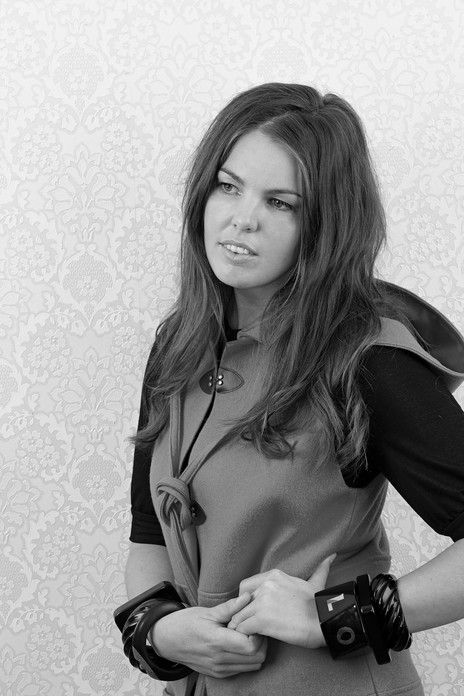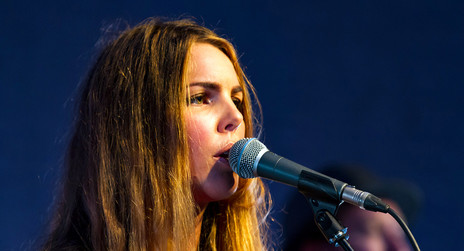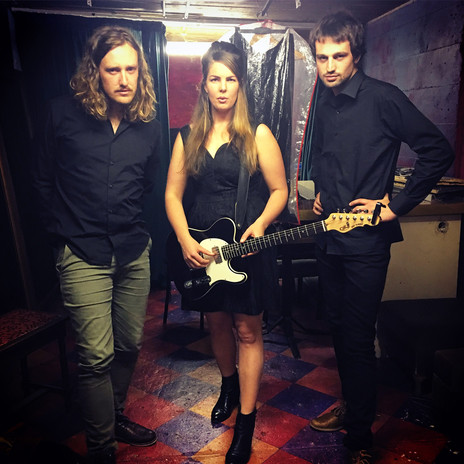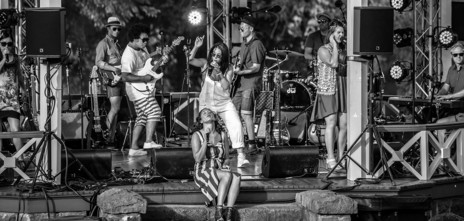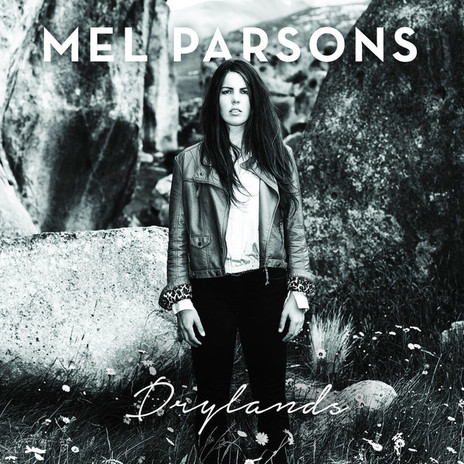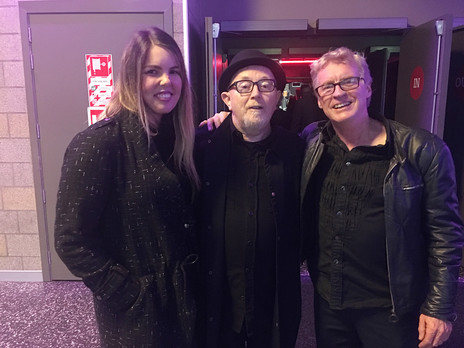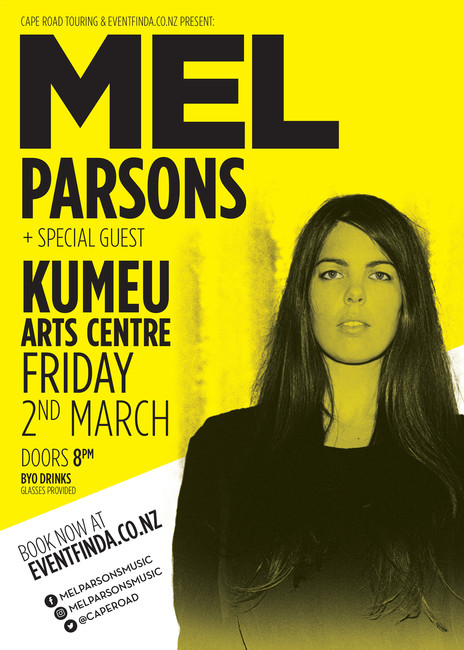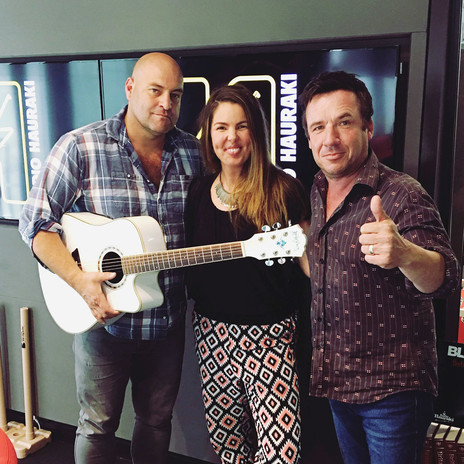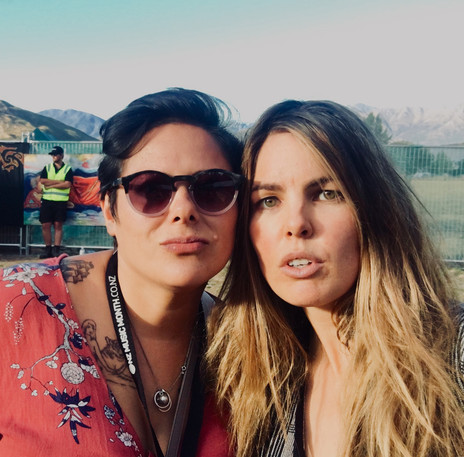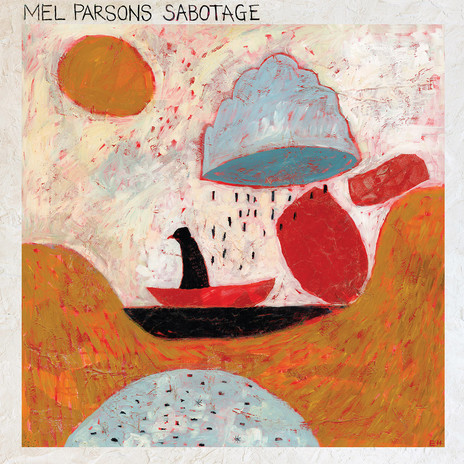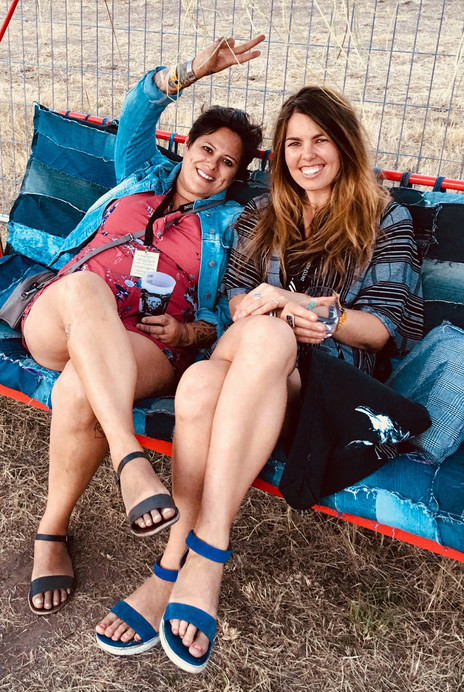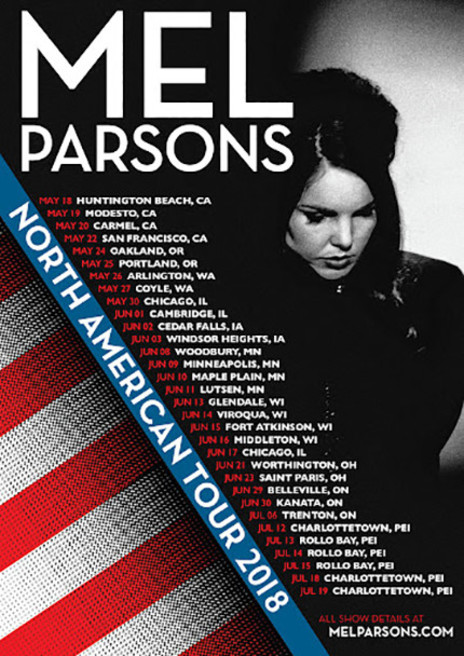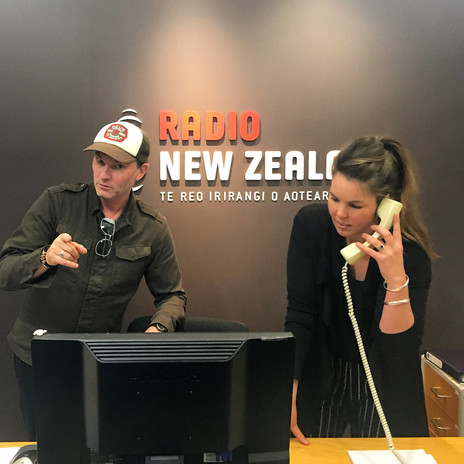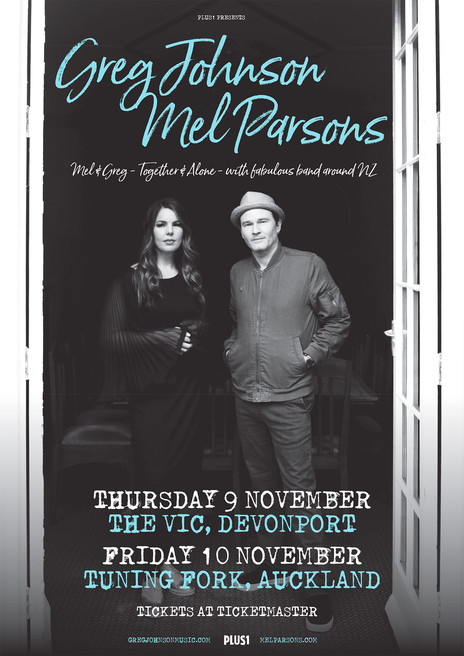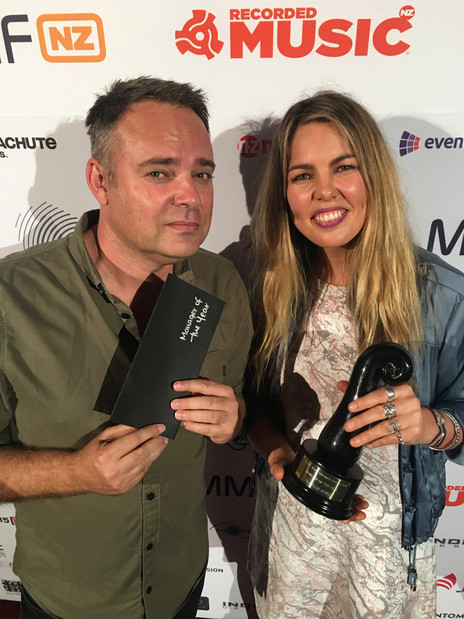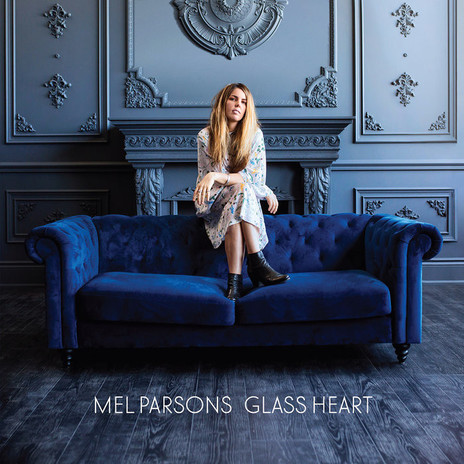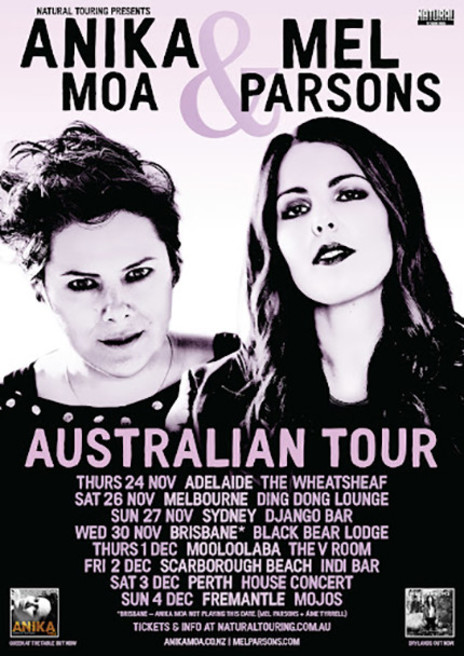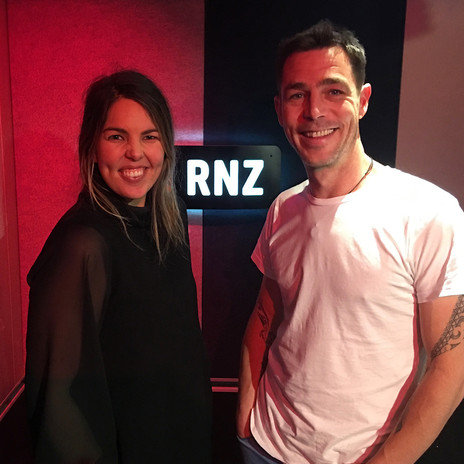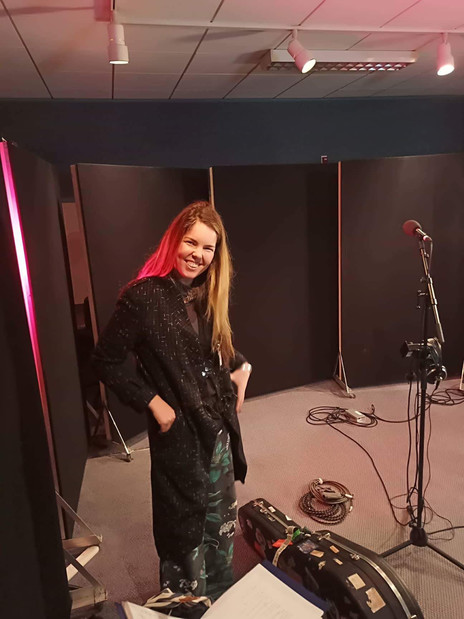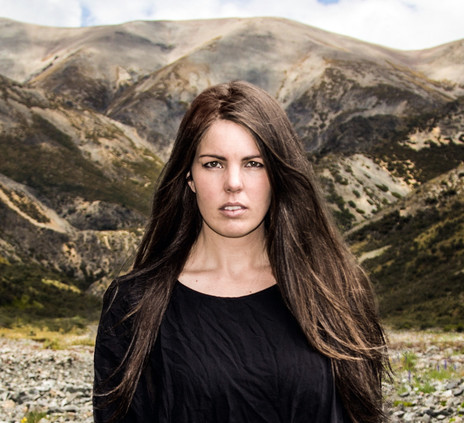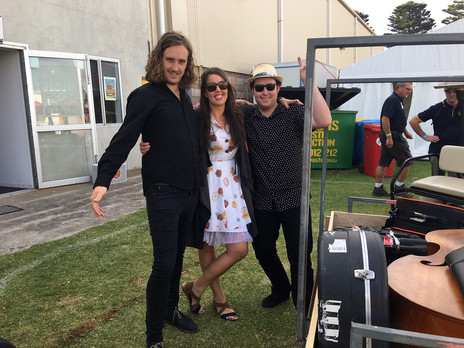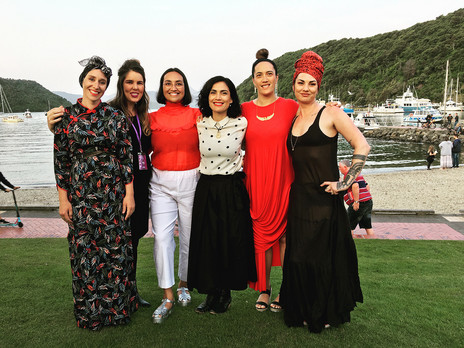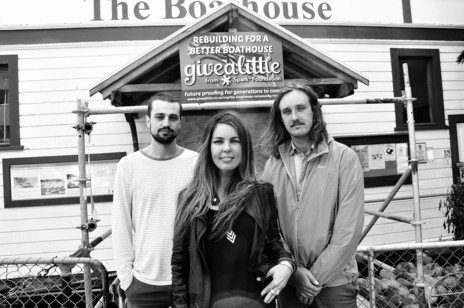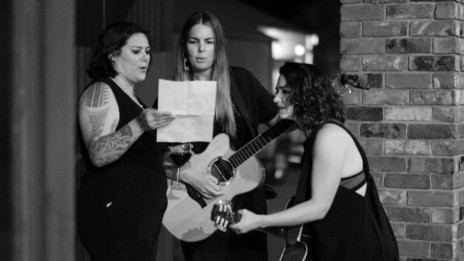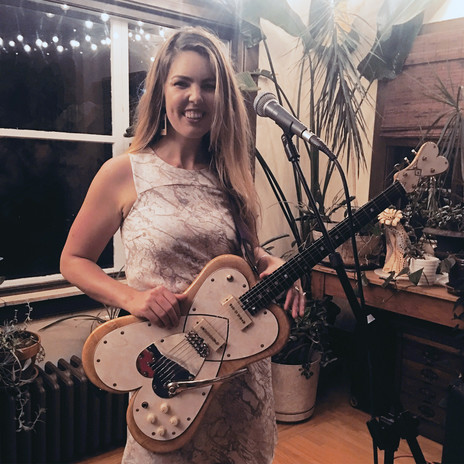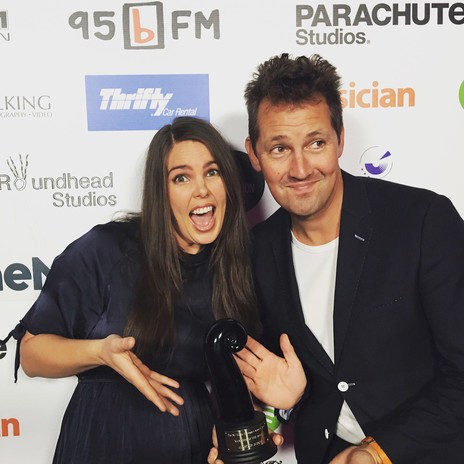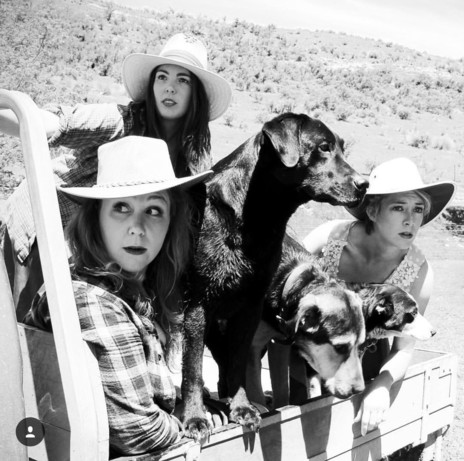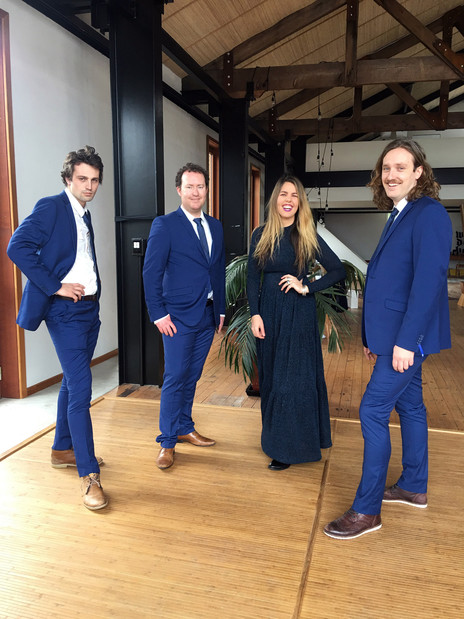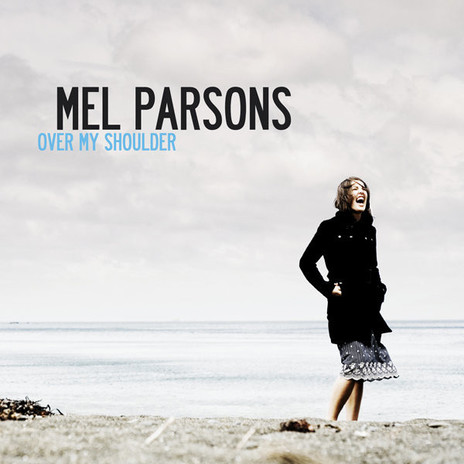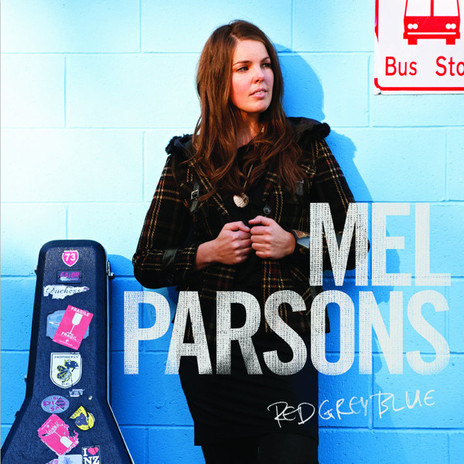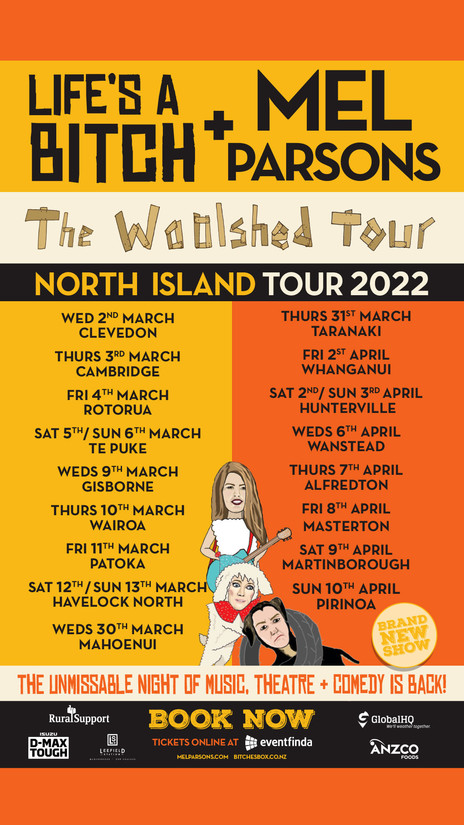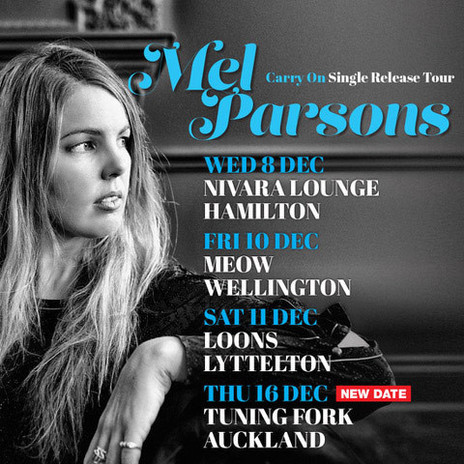All four Parsons siblings took piano lessons from a young age, but it never turned into a passion for Mel, and she doesn’t consider herself a piano player. “It’s annoying, I had so many lessons,” she told AudioCulture in late 2021. “I should be amazing!”
Instead, the lessons became a grounding for the guitar, which she picked up at 14 and immediately connected to. “That was it, I got really hooked on guitar. It’s the classic story, I started writing songs in my bedroom. They were pretty forgettable and thank goodness there was no social media to record it at the time.”
It wasn’t until her late teens that she began to think of music as a career path. After leaving high school, her years of tertiary study in music included stints at (the then) Nelson School of Music, MAINZ in Auckland and the University of Auckland, peppered with gap years working in Australia and teaching music. She quickly learnt she didn’t enjoy teaching and ruled it out early. Parsons eventually graduated with a music degree, which stirs mixed feelings for her.
“I still find it quite weird to be honest, being a songwriter with a music degree,” she reflects in 2021. “There’s such a deconstruction of the songwriting process, and I’m just not that kind of writer.”
“I still find it quite weird to be honest, being a songwriter with a music degree.”
Leaving Auckland in her early twenties, she travelled, worked, and gigged overseas, spending most of her time in Canada. In the winter months she was a ski instructor, and in the summers, a tree planter (“the hardest work you’ll ever do”). She often played acoustic gigs in the ski lodge bars, but at the time it just felt like “mucking around”.
“It’s funny, I was obviously a musician, and playing gigs before I left Auckland, but because I hadn’t released anything I still felt like I wasn’t a proper musician.”
After six years away, Parsons’ life changed in an instant when she and her New Zealand partner were involved in a car accident on a highway in Canada. Her long-time partner died, and she returned to New Zealand with an intense new perspective.
“It gave me a really clear vision, a drive I suppose, to be doing music. Having that experience – obviously horrific as it was – it gave me insight that it can all be gone, you know? We might not be here tomorrow. With music I had been thinking ‘oh yeah, I’ve got heaps of time, I’ll start doing music properly at some point.’ And then I just was like ‘that point is now.’”
Within a few months of returning home, Parsons threw herself into recording her debut album in Wellington. She had only a brief amount of recording experience from her music degree, and boldly fumbled her way through a process she knew little about.
“A lot of people get stuck on ‘I want to make an album, but I don’t know how’, and I was like ‘I want to make an album and I don’t know how, but, I don’t care. I’m just going to do it and stuff will come to me.’”
Working with her friend, multi-instrumentalist Shaun Elley, they recorded in bedrooms, lounges and the occasional studio, borrowing gear and advice wherever possible. While helping as a studio assistant on Don McGlashan’s first solo album Warm Hand, McGlashan had offered Parsons his help when she was ready to record, and she cashed in the favour.
“He [McGlashan] said ‘you’ve got great songs’, which seems like it could have been a throwaway comment at the time, and maybe it was. But he told me that before I had released anything, and it made me feel like that might be enough.”
McGlashan put her in touch with musician, producer and screen composer David Long, who consulted Parsons and her co-producer Elley on the recording and offered his studio for a few tracks. McGlashan also featured on the album, as did other friends such as the Sami Sisters, Lisa Tomlins, and Neil Watson.
Not waiting around to be signed, Parsons created her own label, Cape Road Recordings, and in 2009 – only two years after returning home – Over My Shoulder was released. The warm critical reception and nomination for Best Folk Album at the 2009 New Zealand Music Awards gave Parsons her long-awaited sense of legitimisation. “I felt like I was a real musician.”
“Mel Parsons writes music for the soul, to softly heal all hurt with the dependable remedy of a pretty melody,” wrote Hayley Koorts in a four-star review for Under the Radar. “With a voice as thick and frothy as a calming cappuccino, the Southern Islander’s debut drips with all the heart-warming comfort of a toasty log-burner in the midst of a wild West Coast winter … Parsons has put together a gorgeous catalogue of honest Kiwi folk songs.”
Parsons toured the album in New Zealand and Australia with her band The Rhythm Kings – Aaron Stewart on bass, Ed Zuccollo on keys and Elley on the drums and harmonies.
“bloody mindedness, I suppose, is how I’ve made a career out of it.”
“I decided at that point that I was never going to work a part-time job or do something on the side. I’m going to do this, focus on this and I’ll make it happen. That bloody mindedness, I suppose, is how I’ve made a career out of it.”
Having learnt the ropes on Over My Shoulder, the making of her second album, Red Grey Blue, was a smoother and more confident affair. There was a touch of difficult second album jitters, but not enough to force anything contrived.
“This has kind of carried on for me – going into an album, I just write. I don’t think ‘this album is going to be this theme’ or ‘I want to write songs like this’. I write in an unconscious sort of way ... I try not to pre-judge the songs.”
Co-produced with Jeremy Toy and recorded at the Spare Room, Boatshed Studios and StudioOne in Auckland, Parsons was again joined by a number of friends. Anika Moa, Anji Sami and Greg Johnson contributed backing vocals, while Don McGlashan featured on brass. Red Grey Blue was released in September 2011, and as with all her albums, it was through her own label. Parsons expected that her time as an independent artist would be temporary. “Early on, probably even on the second album, I was sort of shopping songs and hoping to be signed … I thought that was how the process went.
“For a long time, even still on Red Grey Blue, I was quite fixated on my definition of success of having a commercial, radio-hit song. And still on that record I was like ‘can we produce this in a way that is most appealing to radio?’ Which thinking back, is horrible, because it’s not that style of music.”
There may not have been a traditional radio hit, but Red Grey Blue was very well-received, earning Parsons her second nomination for Best Folk Album at the NZ Music Awards, and enjoying a 20-date national tour with her band.
With the gained traction, international touring quickly became common, and since the Red Grey Blue era she has frequently played in Australia, the US, Canada, and Europe, with the occasional visit to the UK. Although she would sometimes pick up a band in Australia, her international dates were mostly solo, for logistical reasons. “If I could, I would have my band all the time,” says Parsons.
“You do end up having quite an intimate connection with audiences when you’re solo, because it’s so exposed and you’re so vulnerable. It’s terrifying, but it’s really buzzy at the same time. And for my style of music, people tend to like to listen to the lyrics, so playing solo is probably the best way.”
Locally, she always enjoys joining forces on tour, often teaming up with friends such as Anika Moa, Gerry Paul, and Greg Johnson, or performing with the large ensemble of artists on the Fly My Pretties Homeland Tour. Then there are her recurring Wool Shed shows, which have become a fan favourite since she started them in 2012. In these shows Parsons plays rural areas as a double-bill show with comedy duo The Bitches’ Box.
Parsons was on the road consistently during this era. After the release of her second album her attitude towards the New Zealand music industry, and her place within it, began to shift. When she came to record her third album Drylands in 2014, she was in a new mind space.
“Between those two albums, Red Grey Blue and Drylands … I realised my music wasn’t geared towards commercial radio and it’s never going to be. As soon as I had that realisation, I felt like ‘oh! That’s just such a revelation!’ It sounds kind of stupid because it’s so obvious, but I had been fixated on that being what would define success for me.”
‘Drylands’, released in April 2015, included a duet with Canadian singer-songwriter Ron Sexsmith.
Drylands, released in April 2015, was recorded at Surgery Studios in Wellington, with Parsons sharing producer duties with Gerry Paul. As is characteristic for her work, the album featured local voices like Moa and Sami. It also included a duet with Canadian singer-songwriter Ron Sexsmith, whom Parsons had cold-emailed about singing on the track, ‘Don’t Wait’.
Although Parsons had recently divorced herself from her notion of traditional success, the album was in many ways traditionally successful, garnering a five-star review in the NZ Herald and four stars from Otago Daily Times and Pop Magazine.
“Observing the mood of Drylands immediately leaves the listener in a melancholy, pensive, and even meditative or thought-provoking state,” wrote Mai Perkins for Pop Magazine. “The compositions range from a dreamy world music vibe to that dusty California folk rock haze, similar to the 1970s Laurel Canyon atmosphere with a gypsy aura seen in neofolk artists like Lana Del Rey and First Aid Kit.”
It also came with awards show recognition. Single ‘Get Out Alive’ was a top five finalist for the 2015 APRA Silver Scroll, the album won Best Engineer at the 2015 NZ Music Awards for Lee Prebble and Oliver Harmer, and ‘Alberta Sun’ won Best Country Music Song at the NZ Country Music Awards.
Winning a country music award was a surprise to Parsons, who doesn’t see herself fitting into the genre. The subjective Venn diagram of genres such as “folk”, “alternative folk”, “country” and “singer-songwriter” used to frustrate her, but over the years she has loosened the grip on how her music is defined.
“It used to really piss me off, the whole genre thing,” she reflects in 2021. “But now I’m just like, whatever people want to call it is fine, I’ll just let the publicist deal with it, it can be whatever they decide. Because that’s all genre is, isn’t it? Putting the music in boxes so it’s easier for people to find.”
While touring in Canada, Parsons spent time with Ron Sexsmith, and their conversations had a big impact on the direction of her next album, Glass Heart. He recommended she work with Mitchell Froom, the prolific American producer and musician who has worked on albums for Sexsmith and many other big-name artists such as Randy Newman, Paul McCartney, Elvis Costello and Rufus Wainwright. Froom also has a strong New Zealand connection, being the keyboardist for Crowded House, and the producer of their first three albums, and Dave Dobbyn’s Lament for the Numb.
Parsons stopped by Froom’s Los Angeles studio during a solo US tour in 2016, and after a successful test session they decided to work together when their schedules could next align. When the time came, Parsons had a “tough call to make”, leaving her band at home to record in Santa Monica. Froom would only work with known quantities and assembled a band of his regular studio musicians. Recorded live in five days, most of the final vocals were first or second takes, with no overdubs. It was quite a change from Drylands, which used a lot of vocal dubs and comping.
Despite the new setting and support, 2018’s Glass Heart was not a significant departure from Parsons’ discography, but an organic and celebrated progression. The single ‘Just ‘Cause You Don’t Want Me’ was a Top 20 Finalist for the APRA Silver Scroll, while the album was a finalist for the 2019 Taite Music Prize and Parsons won Best Folk Artist at the 2020 NZ Music Awards.
PARSONS WON BEST FOLK ARTIST AT THE 2020 NZ MUSIC AWARDS.
“Something you could say in the Red Grey Blue era, I was probably still quite fixated on it sounding really perfect. As time goes on, you realise that your favourite thing about a song might be the way the vocals are slightly pitchy in a certain bit, which gives us a bit of a rub and a special sound … as soon as things are perfect, it’s harder for people to connect to.”
Alongside touring the new work at home and abroad, the years following also included a lot of collaboration for Parsons. She supported The Proclaimers for their New Zealand tour in 2019, joined Liberty Stage’s Come Together tours, which included tributes to Dire Straits’ Brothers in Arms in 2020, followed by Neil Young’s Live Rust and Elton John’s Goodbye Yellow Brick Road in 2021. Parsons also contributed to the Mansfield album, interpreting the poem ‘There Was A Child Once’ into song. When live performance was halted in 2020 due to COVID-19 related restrictions, it was a major lifestyle change for Parsons.
“It’s probably good for me really, to be on an enforced break from the road. For a few years there I would arrive home, basically wash my things, put them back in the suitcase and get back to the airport. It can be pretty punishing.”
“I feel lucky that I’ve done a lot of touring, I’ve spent a lot of time overseas, and played thousands of shows. I know I will get back to that at some point.”
Parsons enjoyed the time with her family, hunkered down in their Lyttelton home. Her current band line-up is Aaron Stewart on bass, Jed Parsons on drums, and Josh Logan on guitar. Past members include guitarists Andrew Moore and Gerry Paul, as well as drummer Nick George.
Throughout the pandemic, Parsons and Logan have been tinkering on a new album which “has been in the pipeline for a while”, and is set for release in 2022. Logan is not only credited as co-producing but co-writing, a first for Parsons who is usually the sole writer. Singles ‘Carry On’ and ‘Already Gone’ have already been released, and when AudioCulture spoke to Parsons in late 2021, the full record was in its final stages. This flexibility and freedom to write and record how she wants, when she wants, is not lost on her.
“Independence has been awesome for me, and it means I’ve got full control over everything. I realise it’s also dangerous, that you can get stuck in your own thing, but I feel like I’m pretty open and still well-connected with the industry, and it helps that other people are working on things with me.”
Perhaps even more satisfying for Parsons is the ability to pay it forward to other musicians, after she received such great guidance on her early years of being a do-it-yourself artist.
“I’m really grateful actually, for having to be forced into that, to have to do that. Because now I feel like I’m in a position where I can help other people, and not from any great point of success, but just in the sense that I’ve managed to make it work. It’s one of the great things about doing it yourself … the understanding of how everything works.”
Mel's sixth album, Sabotage, was released on June 7 2024. It was a finalist at both the Taite Awards in 2025 and for Folk Artist and Album of the Year awards at the 2025 Aotearoa Music Awards.
